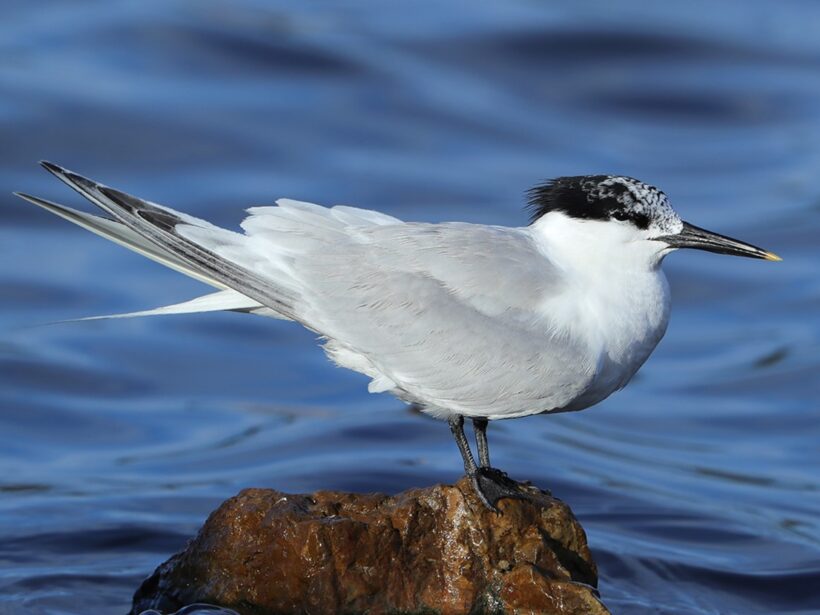Thalasseus sandwichensis
![]()
![]()
![]()
Sandwich terns nest on flat wetlands such as earth or sand banks in marshes or polders, often in the company of other tern or gull species. They lay up to 4 eggs and may lay a replacement if the first one fails and conditions are right, not necessarily on the same site. Terns feed on small fish, most often at sea, but also in freshwater estuaries, rivers and ponds.
In France, Sandwich terns nest in colonies distributed along the coast, mainly from Charente-Maritime to Nord-Pas-de-Calais, as well as in the Mediterranean.
There are no telemetric data available to describe the distribution at sea of Sandwich terns on the French Atlantic coast during breeding season. A priori, terns remain relatively coastal and move a few dozen km away from their colony during breeding. Similarly, little is known about their non-breeding migration strategies. Ringed European individuals are seen in winter along the Iberian and West African coasts, but the species remains present in France in winter.
Adult Sandwich and Common Terns are captured during incubation on their nests at the edge of colonies. Sandwich terns are equipped with 5.5g Mini Lite ®Interrex GPS tags attached to a Teflon harness fitted like a small backpack around their wings. The system is designed to last from several months to over a year, making it possible to track the movements of terns not only during breeding, but also during migration and wintering. This is the first time that such a study has been carried out on terns on the Atlantic coast, after an initial experiment on Mediterranean Sandwich terns monitored as part of the Migralion programme.
The target colonies are in Vendée (Réserve Naturelle Régionale du Polder de Sébastopol à Noirmoutier), Brittany (Réserve Naturelle Nationale des Glénans) and on the Channel coast.
![]() Migratory in France
Migratory in France
![]() Breeder in France
Breeder in France
![]() Wintering in France
Wintering in France

